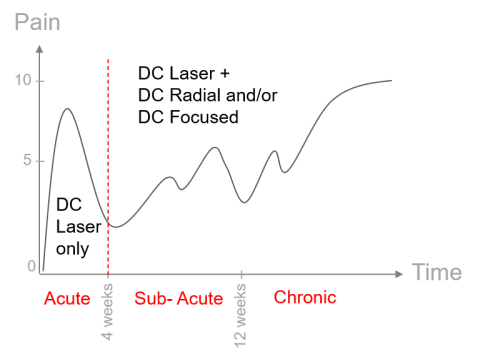
Assess & engage
Patients often describe musculoskeletal injuries as very painful. As a physical and psychological stressor in itself, pain can expose patients to an increased risk of delayed healing. Treating pain is a key measure. But taking patients' opinions into account and guiding them step-by-step toward recovery is crucial to the success of therapy. This is why practitioners must adopt a patient-centered approach to pain care.
How can you best interact with patients during a physical therapy appointment?

Never assume that patients know what to expect.
- Let them know the course of your GDT protocol in detail: inform them about the frequency of sessions and the sequence of treatment.
This will help reduce their possible anxiety and ensure their compliance with the treatment.
Set expectations: they play an important role in the results!
- Openly discuss and establish in advance the patient's expectations, whether related to treatment time, pain relief, increased range of motion, change in quality of life, etc.
Recognize your patients as actors in their recovery.
- Spend time explaining their condition
- Using simple words, explain how GDT technologies work and how they are going to help them overcome their pain
Determine your patient's pain chronicity
Assessing the chronicity of your patient's pain can help you find the most appropriate treatment protocol and is highly recommended for Guided DolorClast® Therapy.
Here is how you can determine the chronicity of your patient.

Has your patient been in pain for less than a month?
In that case, you are in the acute phase of the pathology. GDT recommends using the DolorClast® High Power Laser by itself.
Has your patient been in pain for 1 to 3 months?
In that case, it is in the subacute phase of the pathology. The EMS recommends a combination of laser therapy and shock wave therapy.
Has your patient been in pain for more than 3 months?
In that case, you are in the chronic phase of the pathology and your condition can only get worse as the months go by. EMS recommends a combination of DolorClast® High Power Laser and DolorClast® Radial Shock Waves together with rehabilitation exercises for long-term results.
Contraindications check
Before treating your patient, always be sure to ask if they do not have any of the contraindicated factors.
